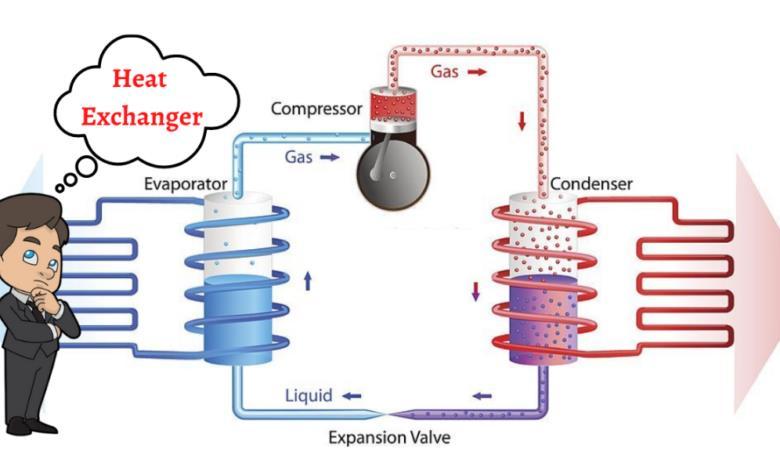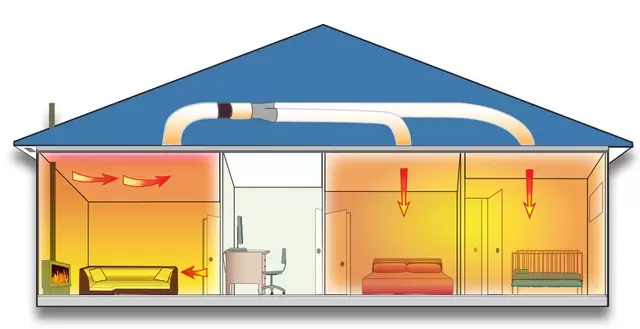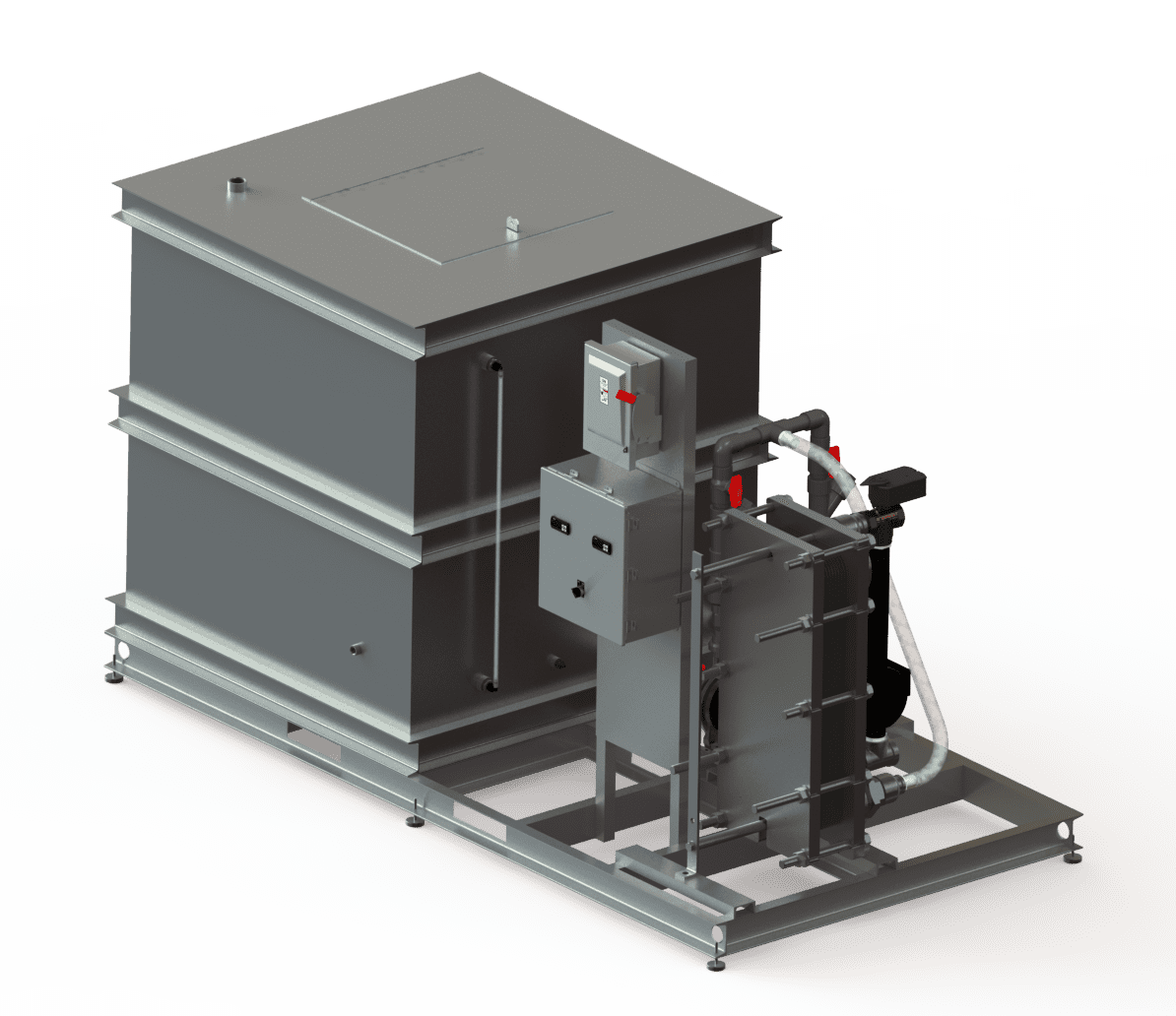Innovations in Heat Transfer Equipments: What You Need to Know for Optimum Efficiency
Technologies in Heat transfer systems are transforming performance across various sectors. Advanced materials like graphene and nanofluids guarantee considerable enhancements in thermal conductivity. On the other hand, the integration of IoT and artificial intelligence uses chances for real-time tracking and enhanced power effectiveness. The landscape of thermal management is quickly advancing. Comprehending these growths is important for attaining excellent system efficiency and sustainability in the future. What details developments are forming this transformation?
Arising Materials for Boosted Heat Transfer

Advanced Heat Exchanger Styles
While conventional Heat exchangers have actually offered their function in numerous applications, advanced designs are now arising to satisfy the boosting needs for performance and efficiency. These cutting-edge designs, such as plate, shell-and-tube, and finned-tube Heat exchangers, incorporate boosted surface areas and enhanced circulation patterns to enhance thermal transfer rates. Additionally, small layouts enable minimized area requirements without jeopardizing effectiveness. Advanced products, such as composites and corrosion-resistant alloys, in addition boost resilience and efficiency under severe problems. Simulation innovations and computational liquid dynamics are significantly used to improve these layouts, making certain peak Heat transfer attributes. As markets seek to minimize energy intake and take full advantage of outcome, the adoption of advanced Heat exchanger layouts is critical in attaining these objectives.
The Function of Nanotechnology in Heat Transfer
Nanotechnology plays a vital duty in boosting thermal conductivity within Heat transfer systems. By adjusting products at the nanoscale, scientists have actually achieved substantial enhancements in energy performance. These innovations not just optimize efficiency yet also contribute to even more lasting energy remedies.
Enhanced Thermal Conductivity
Considerable advancements in thermal conductivity have actually emerged via the application of nanotechnology, revolutionizing Heat transfer systems across various sectors. By including nanoparticles right into Heat transfer liquids and materials, scientists have actually attained remarkable increases in thermal conductivity. These nanoparticles, such as carbon nanotubes, graphene, and steel oxides, boost the Heat transfer properties because of their high surface location and special thermal qualities. The resulting composites show improved efficiency in applications ranging from electronics cooling systems to renewable resource technologies. Moreover, the capability to tailor the size, shape, and structure of nanoparticles enables optimized thermal management solutions. Consequently, nanotechnology continues to play an essential function in the development of a lot more efficient and effective Heat transfer systems, leading the way for enhanced industrial applications.
Energy Effectiveness Improvements

Assimilation of IoT in Heat Transfer Solutions
The combination of IoT in Heat transfer systems presents the implementation of smart sensing units that enhance functional performance. These sensing units enable real-time data tracking, permitting for immediate modifications and optimizations. This technological improvement has the prospective to considerably boost performance and energy monitoring in Heat transfer applications.
Smart Sensors Implementation
As Heat transfer systems develop, the assimilation of wise sensors through the you can check here Internet of Points (IoT) has actually become a transformative technique. These sensing units enable real-time surveillance of flow, temperature, and pressure prices, improving system effectiveness and integrity. By gathering and transmitting data, they promote proactive upkeep, decreasing the risk of system failures. Furthermore, clever sensors add to power financial savings by refining functional specifications based upon environmental conditions. Their ability to evaluate trends and anomalies allows for notified decision-making, guaranteeing peak performance of Heat transfer systems. As industries significantly embrace this innovation, the application of wise sensing units stands to revolutionize how Heat transfer systems are managed, leading the means for greater sustainability and improved performance results.
Real-Time Information Tracking
Exactly how can real-time information keeping an eye on enhance the effectiveness of Heat transfer systems? By integrating Net of Things (IoT) technology, Heat transfer systems can leverage continual information collection from smart sensing units. This real-time tracking permits prompt analysis of circulation, pressure, and temperature level prices, enabling operators to recognize inefficiencies immediately. Changes can be made to maximize efficiency, decrease power consumption, and expand devices life-span. Additionally, anticipating upkeep can be implemented, reducing unforeseen downtime and pricey repair work. The capability to visualize performance metrics via control panels enhances decision-making, cultivating a positive approach to system management. Eventually, real-time data checking not only boosts functional efficiency yet also adds to sustainability goals within commercial procedures.
Power Efficiency and Sustainability Trends
Energy performance and sustainability trends are improving the landscape of Heat transfer systems, driving advancement and compliance throughout various industries. Organizations are increasingly prioritizing energy-efficient styles to decrease operational expenses and minimize environmental effects. The assimilation of renewable resource sources is coming to be extra common, enabling Heat transfer systems to run sustainably while meeting governing requirements. Furthermore, improvements in modern technologies and materials promote reduced power intake and boost general performance. Lifecycle assessments are also getting traction, allowing companies to examine the environmental impact of Heat transfer systems from production to disposal. This concentrate on sustainability not only sustains corporate responsibility but also settings companies competitively in a market where customers progressively prefer environmentally friendly options. Energy performance and sustainability stay crucial factors to consider for future growths in Heat transfer innovation.
Technologies in Thermal Management Solutions
While the demand for efficient Heat transfer proceeds to rise, advancements in thermal administration options are emerging to resolve both efficiency and sustainability challenges. Advanced materials, such as stage modification materials and nanofluids, are being established to boost Heat transfer efficiency - DVS Heat Transfer Systems. These products boost thermal conductivity and enable better temperature level guideline in various applications. In addition, technologies like active thermal control systems are acquiring traction, enabling real-time modifications to manage Heat flow successfully. These systems add to energy financial savings and lower the environmental influence of Check This Out thermal procedures. Moreover, the combination of IoT in thermal monitoring assists in surveillance and anticipating upkeep, guaranteeing maximized efficiency and long life of Heat transfer systems. Generally, these technologies represent substantial strides towards even more lasting thermal monitoring techniques
Future Directions in Heat Transfer Modern Technology
Emerging developments in thermal monitoring options signal an encouraging future for Heat transfer innovation. Researchers are progressively focusing on establishing products with remarkable thermal conductivity and enhanced energy performance. Advancements such as nanofluids, which consist of put on hold nanoparticles, offer significant improvements in Heat transfer efficiency. Furthermore, the integration of wise products that adapt to varying temperature conditions is getting traction, enabling even more efficient and responsive systems. The surge of additive production techniques is also allowing the style of complicated Heat exchanger geometries that enhance liquid flow. The application of machine learning algorithms is anticipated to revolutionize useful link the optimization of Heat transfer systems, facilitating anticipating upkeep and performance improvement. Jointly, these improvements are poised to transform the landscape of Heat transfer innovations in different sectors.

Regularly Asked Inquiries

Exactly how Do I Select the Right Heat Transfer System for My Application?
Selecting the ideal Heat transfer system involves examining application requirements, consisting of temperature level varieties, fluid homes, and efficiency requirements. Evaluating system kinds, maintenance considerations, and cost-effectiveness likewise plays a crucial function in making a notified decision.
What Are the Upkeep Demands for Advanced Heat Exchangers?
Maintenance needs for innovative Heat exchangers commonly include normal examinations, keeping track of for leaks, cleaning of surfaces, and guaranteeing perfect flow prices. Abiding by maker standards warranties effective procedure and lengthens the devices's lifespan.
Exactly How Do Environmental Variables Affect Heat Transfer Performance?
Environmental elements considerably influence Heat transfer effectiveness. Variations in moisture, temperature, and air flow impact thermal conductivity and convective Heat transfer, eventually influencing system performance and requiring factor to consider during the design and operation of Heat transfer systems.
What Safety Criteria Put On Heat Transfer Equipments?
Security standards for Heat transfer systems normally include guidelines from organizations such as ASME and ASTM. DVS Heat Transfer Systems. These criteria address materials, layout, and operational practices to guarantee reliability, efficiency, and defense against dangers in different applications
How Can I Troubleshoot Typical Heat Transfer System Issues?
Repairing common Heat transfer system concerns includes examining for leakages, ensuring correct fluid flow, inspecting insulation stability, and verifying temperature differentials. Identifying these aspects can help maintain system efficiency and protect against additional complications.
Nanotechnology plays a necessary duty in boosting thermal conductivity within Heat transfer systems. Considerable innovations in thermal conductivity have arised with the application of nanotechnology, changing Heat transfer systems throughout various markets. Innovations in thermal conductivity via nanotechnology have led the method for remarkable renovations in energy effectiveness within Heat transfer systems. Power efficiency and sustainability patterns are improving the landscape of Heat transfer systems, driving innovation and conformity throughout various industries. The integration of IoT in thermal administration assists in tracking and anticipating upkeep, making sure optimized efficiency and longevity of Heat transfer systems.